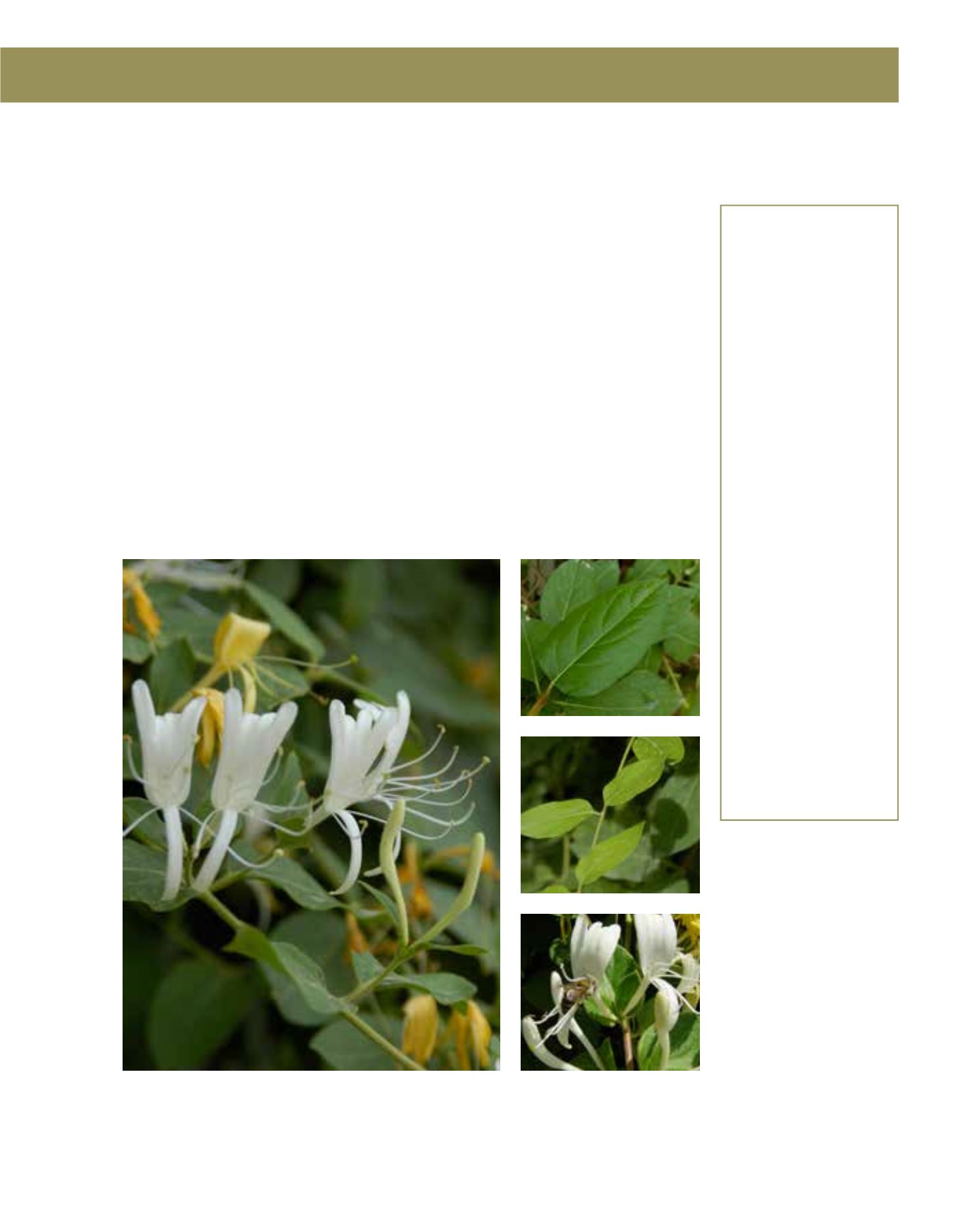

GENERAL
Origin
:
temperate
Vigour
:
fairly fast
growing
Humidity
:
very arid, semi-
arid, semi-humid,
very humid,
extremely humid
Propagation :
cuttings
Maintenance :
moderate
CONDITIONS
Urban climate :
resistant
Dessication :
vulnerable
Stagnant water :
vulnerable
Irrigation
:
medium
Salinity/ppm :
moderate (1800
ppm)
Hardiness
:
0°C
SHAPE
Type
:
climbers
Height
:
3 m-6 m
Spread
:
3 m-6 m
Foliage
:
evergreen
FLOWER
Colour
:
bright white,
secondary: deep
yellow
Size
:
3 cm - 4 cm
Period
:
May - July
Smell
:
scented, strong,
pleasantly
scented, flower,
sweet, fruity
FRUIT
Type of fruit :
berry
Fruit size
:
0.6 cm
Toxicity
:
inedible
Lonicera japonica ‘Halliana’ is the Japanese or Hall’s Honeysuckle. Honeysuckle is native to eas-
tern Asia, including China, Japan and Korea. The plant belongs to the vine family, and climbs to
a height of 5 metres. For climbing, it needs a grit or fence in order to twine. The leaves are ever-
green to partly deciduous in an ovate shape in light green. The delicate flowers attain a size of 4
cm. They begin to flower in bright white and turn deep yellow while withering. The flowers exude
a pleasant sweet fragrance in spring and summer. After flowering, black inedible berries appear.
Lonicera japonica is undemanding in terms of site requirements. It tolerates some drought, hot
winds, poor soil and hot sun, and revels in heat. However, it can be affected by frost because it
prefers temperatures above 1°C; otherwise it becomes deciduous. It will leaf out quickly again
in warm weather. With constant adequate irrigation, it will look fresh and green. Although it is
drought-tolerant, it will look mangy and sections will die out with lack of water. Periodic pruning
is recommended for thinning and to control growth. Honeysuckle should not be planted too clo-
se to shrubs or trees, because it can take over. On hillside planting or as a slope stabiliser, it will
control erosion. For Arriyadh, it is a recommended plant for screening, park plantations, public
open spaces, urban areas in pedestrian precincts and the tops of walls. Quick shade can be gained
for gazebos where the sweet, enchanting fragrance can be enjoyed
194
Lonicera japonica ‘Halliana’,
Caprifoliaceae
Japanese Honeysuckle
















